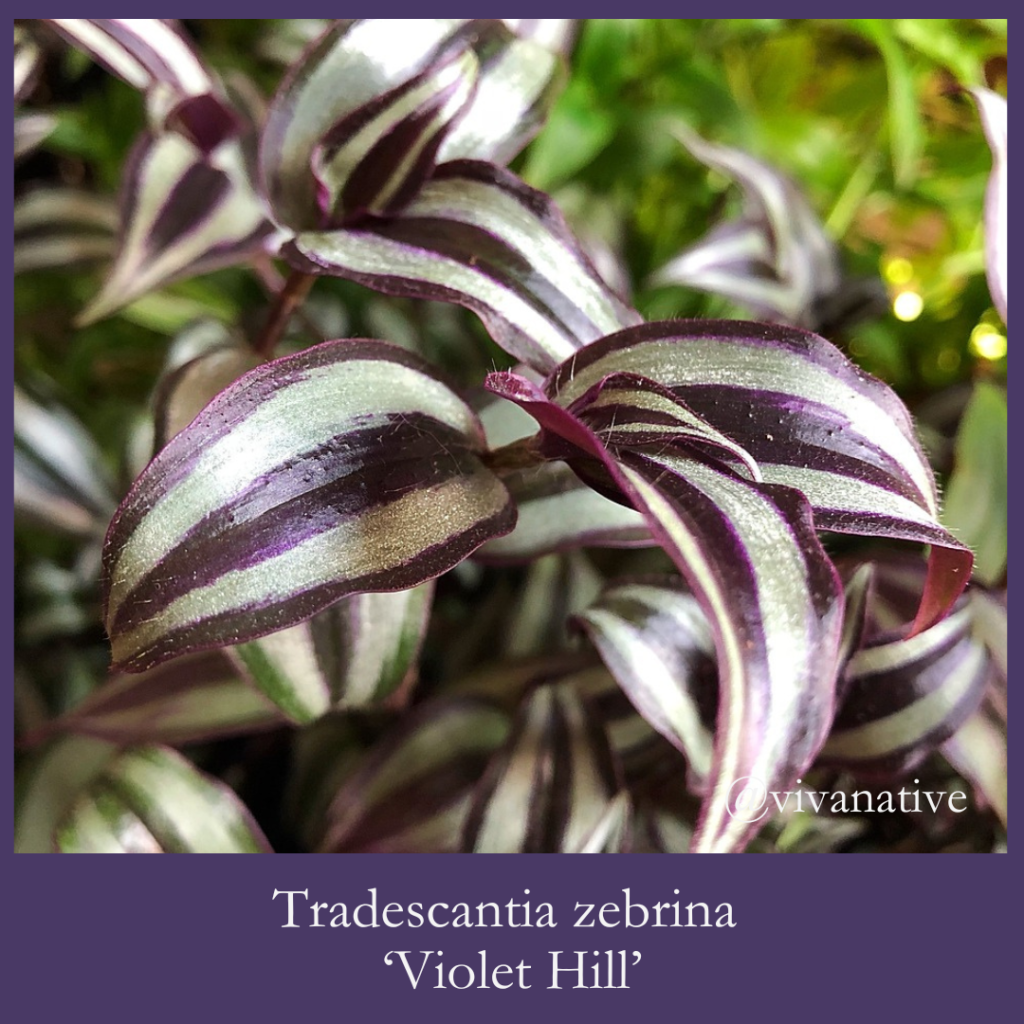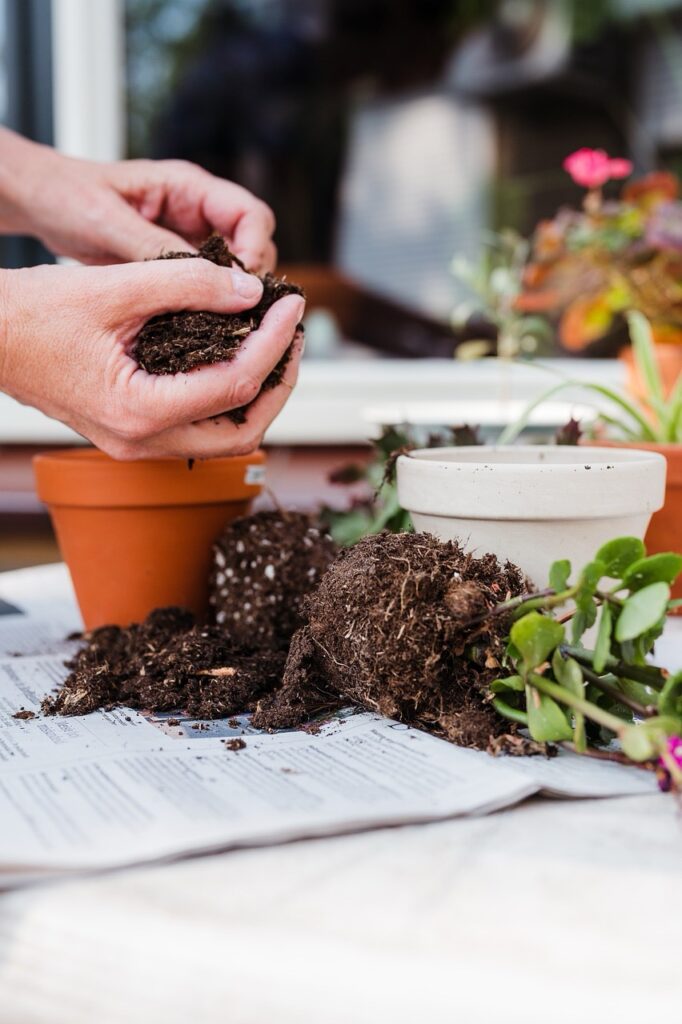Tradescantia Complete Guide to Growing and Caring for Tradescantia Indoors and as a Summer tropical
Having grown Tradescantia for many years, and also struggled with their common name, I wanted to share some Tips for growing Inch-plant Houseplants in your Home and love them as they romp, unchecked through a Summer Garden.
Tradescantia, commonly known as Spiderwort or Inch Plant, is a popular houseplant loved for its vibrant foliage and ease of care. With a range of stunning varieties like Tradescantia zebrina, Tradescantia pallida, and Tradescantia nanouk, this versatile plant adapts well to indoor settings and brings a touch of color to any space. Here’s your ultimate guide to growing and maintaining a healthy Tradescantia indoors!
What is Tradescantia? Overview of Popular Indoor Varieties
The Tradescantia genus, also known as Inch-plant, belongs to the Commelinaceae family. It’s recognized for its low-maintenance needs and the wide array of colors its varieties offer. Some of the most popular Tradescantia types for indoor care include:
Tradescantia zebrina (Zebra Plant): Known for its striking purple and silver-striped leaves, this variety has a trailing habit, perfect for hanging baskets.
Tradescantia pallida (Purple Heart): With deep purple foliage, this cultivar adds dramatic color contrast.
Tradescantia nanouk: A newer, compact variety with thick leaves striped in pink, white, and green. It’s particularly popular for its vibrant coloration and robust growth.
These varieties are not only beautiful but thrive in many indoor conditions, making them a favorite among both beginner and expert plant owners.
Best Location and Light Conditions for Tradescantia Indoors
Tradescantia plants prefer bright, indirect light, though they can adapt to medium light levels. Avoid placing them in direct sunlight for extended periods, as it may cause leaf scorching. East-facing windows provide ideal morning light, while west-facing spots should have some filtered shading.
If you notice the colors fading or the plant getting leggy, it’s likely due to insufficient light. Consider rotating your plant or adding artificial grow lights to keep it healthy and vibrant.
Watering Tradescantia: How Much and How Often?
Tradescantia plants prefer moderately moist soil, but they don’t tolerate soggy conditions. Here are some guidelines for proper watering:
Check the Soil: Allow the top inch of soil to dry out before watering again. Stick your finger into the soil to test for dryness.
Watering Frequency: Depending on your indoor humidity and light, watering once every week to ten days is usually sufficient.
Prevent Root Rot: Ensure your pot has good drainage holes, as Tradescantia roots are susceptible to rot if left in standing water. Remove any excess water from the saucer after each watering.
Tip: Reduce watering during the winter months, as the plant’s growth slows in lower light conditions.
Choosing the Right Soil and Potting Mix for Tradescantia
For healthy growth, plant Tradescantia in a well-draining potting mix. A general houseplant or succulent mix works well, as these provide adequate drainage while retaining necessary moisture. If you’re mixing soil yourself, combine one part peat moss, one part perlite, and one part potting soil.
How to Propagate Tradescantia: Simple Steps to Grow New Plants
One of the best aspects of Tradescantia is how easily it propagates from stem cuttings. Follow these steps for successful propagation:
Select a Healthy Stem: Choose a 3-4 inch cutting from a healthy plant, ideally just below a leaf node.
Water or Soil Propagation: Place the cutting in water or directly in soil. If propagating in water, ensure at least one node is submerged, and roots should appear within a week.
Transplant: Once the roots are 1-2 inches long, transfer the cutting to soil if you started in water.
Propagation is a great way to grow more Tradescantia plants for free and can make your main plant look fuller.
Common Problems with Tradescantia and How to Fix Them
Like all houseplants, Tradescantia can experience issues. Here’s a quick troubleshooting guide:
Yellow Leaves: Often a sign of overwatering or low light.
Brown Tips: This can occur if the air is too dry or from fluoride in tap water. Mist the plant or use filtered water.
Pests: Tradescantia may attract spider mites or aphids. Check the leaves regularly and treat with neem oil or insecticidal soap if needed.
Benefits of Growing Tradescantia as a Houseplant
In addition to its beauty, Tradescantia offers several indoor benefits:
Air Purification: Like many houseplants, Tradescantia improves indoor air quality by removing toxins.
Low Maintenance: Tradescantia is forgiving and adapts well to various indoor conditions, making it ideal for beginners.
Aesthetic Appeal: With colorful leaves and trailing growth, Tradescantia adds a lush, vibrant look to any room.
Frequently Asked Questions About Tradescantia Care
Why is my Tradescantia losing color?
Likely due to insufficient light. Move it to a brighter location to revive the colors.
How can I make my Tradescantia bushier?
Pinch off stem tips regularly to encourage branching, resulting in a fuller plant.
What should I do if my Tradescantia is drooping?
Check for under watering or overwatering, and ensure it has adequate light.
Tradescantia is a rewarding indoor plant that can thrive with the right care and minimal maintenance. Its vibrant foliage and ease of propagation make it perfect for any plant enthusiast looking to add color and interest to their indoor garden. Follow these simple care tips, and you’ll have a flourishing Tradescantia that brings joy to your home year-round!
Check out Tradescantia Chat… where the only requirement is RESPECT!
Amanda: So, I was doing some research on Tradescantia zebrina, also called Spiderwort or, traditionally, “Wandering Jew.” But I heard some people are calling it “Wandering Dude” now? What do you all think about that name shift?
Carlos: I’ve noticed that too! It’s an interesting change, especially with these older common names. There’s been a lot of debate over which plant names are insensitive. “Wandering Jew” was just one I learned from my grandma, but it’s clear how much more aware people are today about what might feel disrespectful.
Emily: Agreed, Carlos. I’m all for updating names to something that feels respectful and inclusive. I mean, if there’s a shift to “Wandering Dude” instead, why not? It avoids the potentially problematic history associated with the original term. But at the same time, I think it’s important we don’t lose sight of cultural and botanical history.
Ben: I get that, but it makes me wonder where we draw the line. Tradescantia is just one example; what about plants like “Black-Eyed Susan”? It sounds fine to some, but to others, it’s uncomfortable. For some of us who are older, it seems like newer generations want every term to feel neutral, and that’s a big shift from what we grew up with.
Sasha: Absolutely, Ben. The generational difference is so noticeable. For people who are, say, in their 50s or older, a lot of these names are just… normal, no big deal. But for younger people, there’s this effort to question language and origins behind everything. I’m torn because I value honoring tradition, but I also want to respect evolving perspectives.
Tom: I hear you, Sasha. I think the term “political correctness” has started to feel so subjective. Is it politically correct to change everything that has some questionable origin, or is it better to keep some things as they are for tradition’s sake? And honestly, sometimes I feel like we’re walking on eggshells, even with plants!
Amanda: True, Tom. Personally, I don’t think it’s about erasing history but understanding it. “Wandering Jew” has a complex origin tied to an old legend, and some people find it hurtful, so why not update it if it makes others feel more comfortable? We aren’t losing the plant or its beauty—just shifting the term.
Carlos: I think there’s value in finding a balance. We can respect older names and still educate others on their origins, but if a term actively bothers people today, then maybe changing it shows we’re moving forward together. This doesn’t mean we’re erasing history; we’re adapting language to fit our values.
Emily: Exactly, Carlos. Language reflects culture, and our culture has evolved. If we want to call Tradescantia“Wandering Dude,” and people find it easier or more respectful, great! Same with Black-Eyed Susan or even something like a “Dumb Cane” plant (another name that’s changed). It’s progress that connects us to today’s values.
Ben: Maybe that’s what it’s really about—what today’s generation values and respects. My question is, are we losing any connection to past generations by changing these terms? Some people say it’s just a plant name, but I feel like it represents a lot more.
Sasha: Ben, I see where you’re coming from. The shift can feel like it’s erasing those shared memories and knowledge passed down. But maybe it’s more like… a modernization, a way to keep those plants relevant and appreciated for everyone.
Amanda: Well said, Sasha. At the end of the day, we’ll still share those memories of these plants, no matter what they’re called. But maybe we’re also creating a more inclusive plant community for the future, where everyone can feel good about the words we use.




Pingback: Growing Tradescantia ‘Nanouk’ at Home – iGrowHort